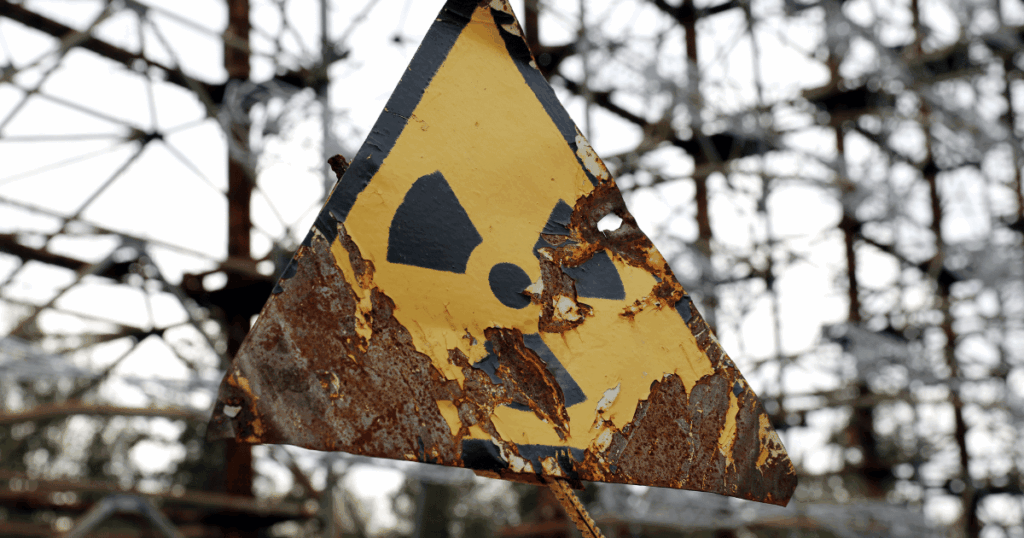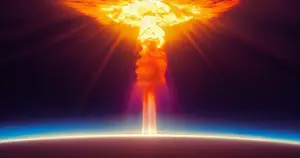
In the face of the current rise in international tensions, the fear of nuclear war is once again on the minds of many citizens. This growing concern has naturally sparked increased interest in fallout shelters, often called bunkers. A key question that frequently arises is: after a nuclear explosion, how long should one remain confined to avoid the dangers linked to the duration of radioactivity? This article offers you a detailed analysis of the duration of radioactivity after a nuclear explosion and offers you practical advice for a safe return to the outdoors.
What happens after a nuclear explosion?
During a nuclear explosion, several devastating phenomena occur: a powerful shock wave, intense heat, and extremely dangerous immediate radiation. However, one of the major risks after the explosion is the duration of residual radioactivity, more commonly known as nuclear fallout.
This fallout consists of radioactive particles that gradually fall back to the ground after the explosion. Three main types of radiation emanate from these particles:
- Alpha : dangerous only if swallowed or inhaled.
- Beta : penetrates the skin weakly, but represents a serious risk for external tissues.
- Gamma : the most dangerous, because it can easily pass through living materials and tissues, causing serious internal damage.
Radioactive Decay: How Does the Duration of Radioactivity Work?
The duration of radioactivity depends directly on the process of radioactive decay, during which radioactive elements gradually lose their activity according to a precise rule called half-life. Half-life is the time required for the radioactive activity of an element to decrease by half.
A practical rule to remember is the 7-10 law: every 7 hours after the explosion, the duration of radioactivity decreases by a factor of 10This means that after 7 hours the radioactivity is divided by 10, after 14 hours by 100, and so on.
How long does radioactivity last after a nuclear bomb?
The duration of radioactivity after a nuclear explosion varies considerably depending on the conditions of the explosion and environmental circumstancesHere are some key figures to understand the severity of the danger over time:
- 1 hour after the explosion : the duration of radioactivity is extremely high, fatal without immediate protection.
- 24 hours later : the duration of radioactivity is still dangerous, even if it has decreased significantly.
- 48 to 72 hours later : the duration of radioactivity decreases significantly, which makes a short exit possible in cases of extreme necessity.
- After 2 weeks : the duration of radioactivity generally reaches a tolerable level, provided that the shelter has been properly secured.
Location relative to the epicenter and weather conditions (wind, rain) also play a crucial role in the duration of radioactivity.
When is it safe to exit a bunker?
To determine precisely when to safely leave a bunker, several factors must be taken into account:
- Type of explosion : a ground explosion generates more radioactive fallout than an air explosion.
- Distance from the epicenter : the further away you are, the less time you will experience the initial intense radioactivity.
- Shelter quality : protection against gamma radiation and the ability to filter air are essential.
- Geiger counter : an essential device to precisely measure the duration of radioactivity.
Essential recommendations regarding the duration of radioactivity:
- Minimum of 72 hours : remain confined in an armored shelter.
- Ideally 14 days or more : if your resources allow it, this maximizes your safety for the duration of critical radioactivity.
How to prepare for a prolonged period in a shelter?
The duration of radioactivity involving an extended stay in a shelter, it is crucial to be well prepared:
Essential elements:
- Drinking water : at least 2 liters per person per day.
- Sustainable food : non-perishable food for several weeks.
- Filtered air : high-performance filtration system against radioactive particles.
- Energy : batteries, manual generators or solar panels to maintain essential equipment.
- Dry toilet : to maintain hygiene in confined conditions.
- External communication : reliable radios and means of communication to receive vital information.
Psychological preparation:
Prolonged confinement requires effective stress and time management. Plan activities to occupy the mind and maintain morale.
A well-equipped bunker:
Investing in a bunker A watertight, well-insulated and equipped environment is essential to ensure maximum safety throughout the duration of critical radioactivity.
Why is investing in a bunker essential security?
In an uncertain geopolitical climate, owning a private bunker offers unparalleled security. Benefits include:
- Immediate protection against nuclear explosions.
- A secure confinement period.
- Safely controlled freedom of movement after the duration of radioactivity has decreased.
At the house of Swiss Bunker, we are experts in the tailor-made design of highly secure fallout shelters, using Swiss quality and know-how to guarantee you optimal protection.
Discover our tailor-made solutions at Bunker Swiss.
Conclusion on the duration of radioactivity
The duration of radioactivity after a nuclear explosion diminishes rapidly, but the danger remains significant for several days to weeks. It is vital to follow the recommended time limits to stay safe.
Plan ahead by building or purchasing an effective bunker: your safety and that of your loved ones depend on it.
Don't leave your safety to chance. Request your personalized plan from Bunker Swiss today!



